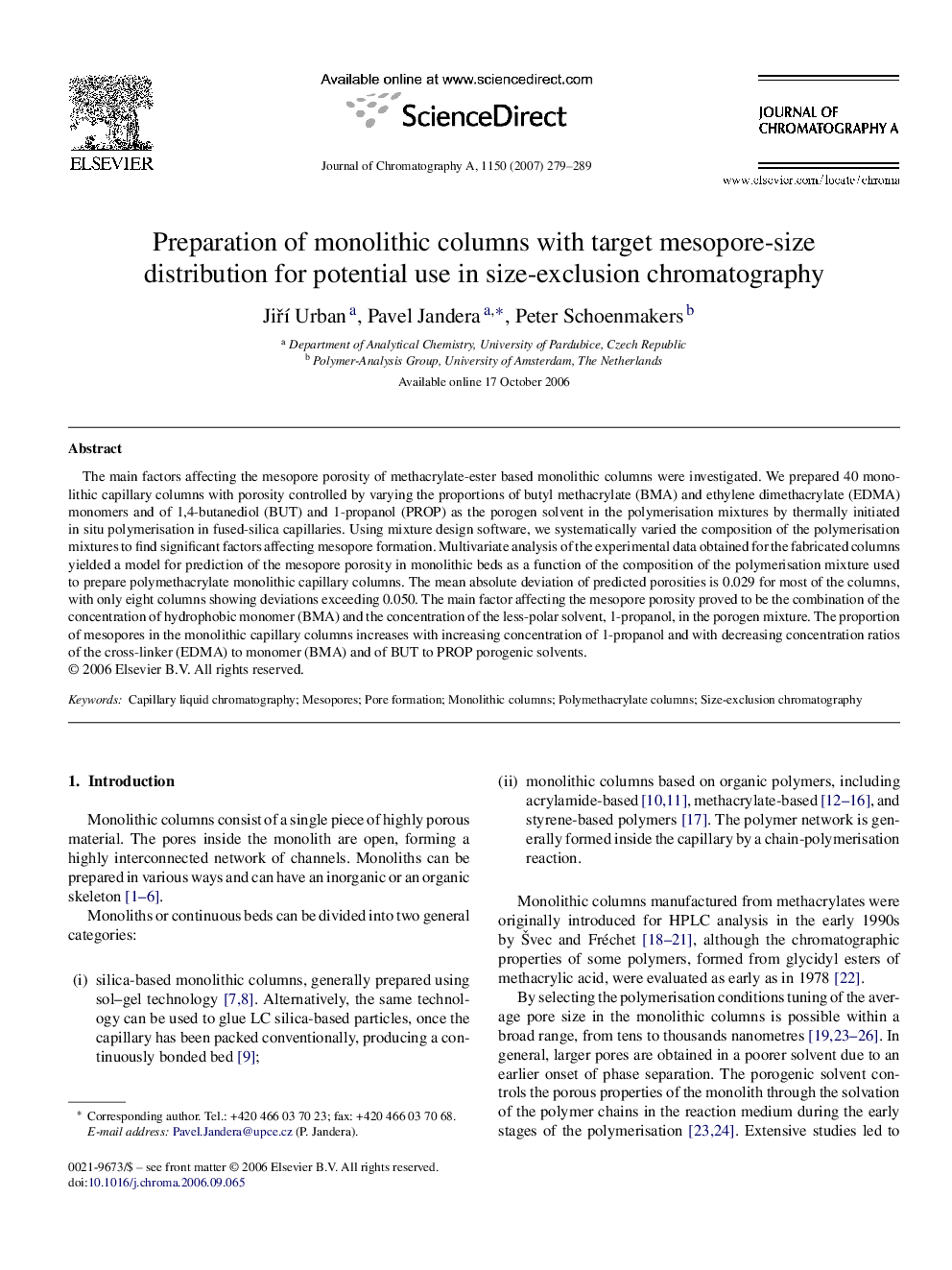| Article ID | Journal | Published Year | Pages | File Type |
|---|---|---|---|---|
| 1209130 | Journal of Chromatography A | 2007 | 11 Pages |
Abstract
The main factors affecting the mesopore porosity of methacrylate-ester based monolithic columns were investigated. We prepared 40 monolithic capillary columns with porosity controlled by varying the proportions of butyl methacrylate (BMA) and ethylene dimethacrylate (EDMA) monomers and of 1,4-butanediol (BUT) and 1-propanol (PROP) as the porogen solvent in the polymerisation mixtures by thermally initiated in situ polymerisation in fused-silica capillaries. Using mixture design software, we systematically varied the composition of the polymerisation mixtures to find significant factors affecting mesopore formation. Multivariate analysis of the experimental data obtained for the fabricated columns yielded a model for prediction of the mesopore porosity in monolithic beds as a function of the composition of the polymerisation mixture used to prepare polymethacrylate monolithic capillary columns. The mean absolute deviation of predicted porosities is 0.029 for most of the columns, with only eight columns showing deviations exceeding 0.050. The main factor affecting the mesopore porosity proved to be the combination of the concentration of hydrophobic monomer (BMA) and the concentration of the less-polar solvent, 1-propanol, in the porogen mixture. The proportion of mesopores in the monolithic capillary columns increases with increasing concentration of 1-propanol and with decreasing concentration ratios of the cross-linker (EDMA) to monomer (BMA) and of BUT to PROP porogenic solvents.
Keywords
Related Topics
Physical Sciences and Engineering
Chemistry
Analytical Chemistry
Authors
JiÅÃ Urban, Pavel Jandera, Peter Schoenmakers,
